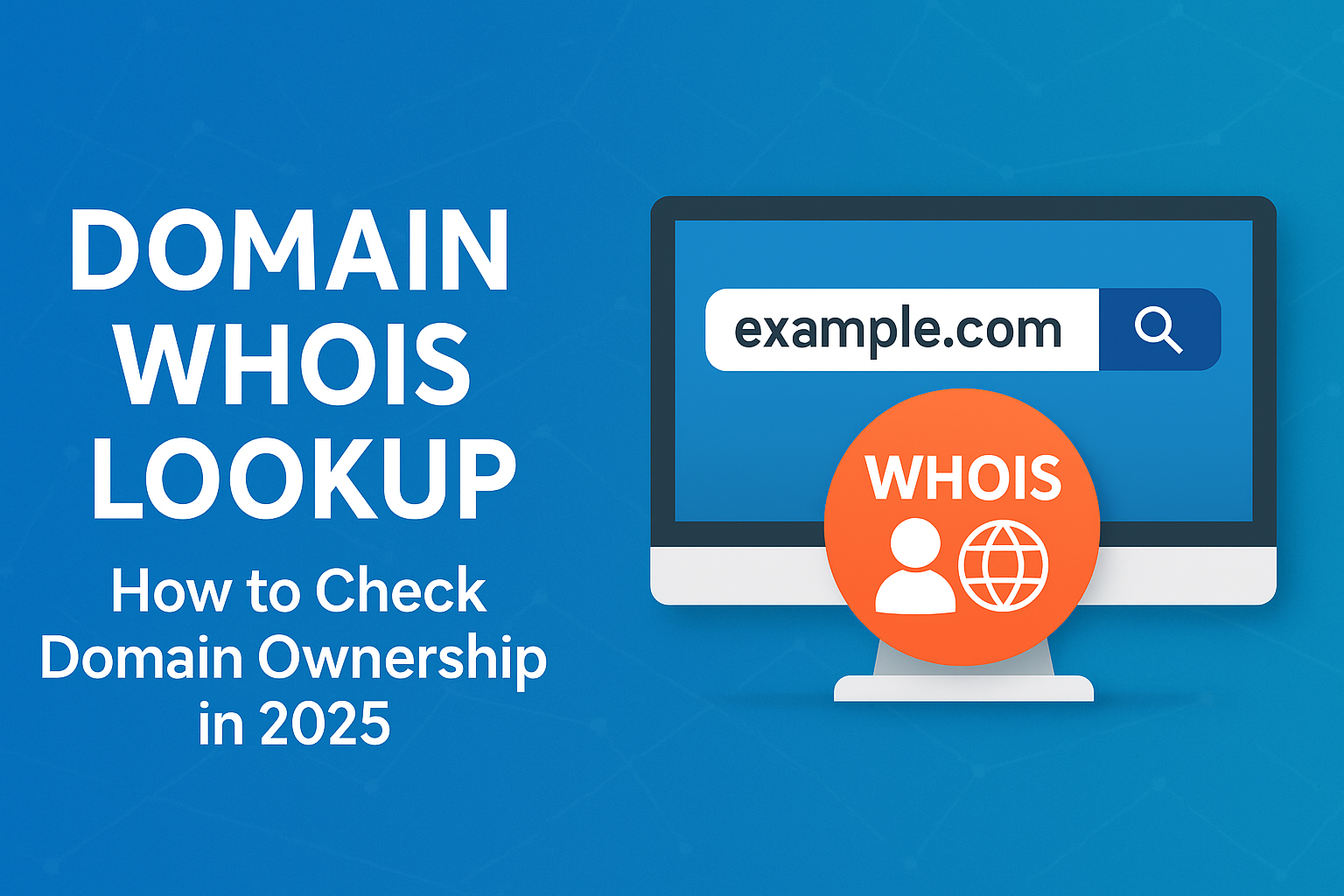
25
Domain WHOIS Lookup: How to Check Domain Ownership in 2025
Learn how to check domain ownership with WHOIS lookup in 2025. Find out what information is available, why it matters, and how to use the free Recipeace Domain WHOIS Tool.
Introduction: Why WHOIS Matters
Every domain name on the internet has an owner, and that information is stored in the global WHOIS database. Whether you’re buying a new domain, checking for fraud, or investigating a competitor, a WHOIS lookup gives you key details.
In 2025, WHOIS is still essential for website security, domain trading, and transparency — even with GDPR and privacy protections hiding some data.
This guide explains what WHOIS is, how it works, and how to use the free Recipeace Domain WHOIS Tool.
What Is WHOIS?
- Definition: A publicly available database of domain registration details.
- Data Included: Owner’s name, email, registrar, registration & expiry dates, and name servers.
- Purpose: Helps identify domain holders, prevent fraud, and resolve disputes.
Why Use a WHOIS Lookup?
- Check Domain Availability
See if a domain is taken, when it expires, and if it might become available. - Verify Ownership
Essential for buyers before purchasing a domain. - Investigate Suspicious Sites
Helps detect scams and fraudulent websites. - Resolve Legal Issues
Used in trademark disputes and cybersquatting cases. - Domain Research
Competitors, SEO professionals, and businesses use it to analyze domains.
How WHOIS Data Is Protected Today
Since the GDPR (2018), much WHOIS data is hidden:
- Email & address often replaced with proxies.
- Registrars provide contact forms instead of direct emails.
But core info like registrar, DNS servers, and expiry date is still visible.
How to Perform a WHOIS Lookup
Use the Recipeace Domain WHOIS Tool:
- Enter a domain name.
- Get instant results with registrar info, key dates, and hidden or public owner details.
- Use the contact method provided (if protected).
Example WHOIS Report
For example.com:
- Registrar: Verisign
- Creation Date: 1995-08-13
- Expiry Date: 2030-08-13
- Name Servers: ns1.example.com, ns2.example.com
- Registrant Contact: Protected by privacy service
WHOIS and Domain Trading
- Domain investors use WHOIS to see expiry dates.
- Expired domains can be bought and redirected for SEO.
- Premium domain buyers often negotiate directly with owners via WHOIS contact.
WHOIS and Website Security
- Cybersecurity experts use WHOIS to investigate phishing.
- WHOIS data helps law enforcement track malicious actors.
- Many scam websites use privacy shields — a red flag.
Common Mistakes When Using WHOIS
- Believing WHOIS guarantees contact — many owners block emails.
- Forgetting to check expiry dates (risk of domain loss).
- Ignoring registrar info (important for disputes).
Alternatives to WHOIS
- RDAP (Registration Data Access Protocol): Modern replacement for WHOIS.
- Registrar Dashboards: Provide owner access and verification.
- Third-Party Tools: Some SEO and hosting platforms integrate WHOIS data.
Future of WHOIS in 2025 and Beyond
- WHOIS may be fully replaced by RDAP.
- More AI-driven WHOIS tools will analyze data trends.
- Greater privacy laws may further hide ownership info.
Conclusion: WHOIS Is Still Essential
Even with privacy protections, WHOIS remains critical for domain buyers, cybersecurity, and SEO.
Use the Recipeace Domain WHOIS Tool to:
Check domain availability
Verify registration details
Investigate suspicious domains
Research competitors
Contact
Missing something?
Feel free to request missing tools or give some feedback using our contact form.
Contact Us